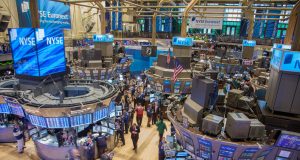Silver has surged past $50 per ounce for the first time, gaining over 78% year-to-date and outpacing gold’s 50% advance. Analysts now suggest the metal could reach $100 in the coming years, driven by powerful supply-demand dynamics and expanding industrial applications.
The silver market faces its fifth consecutive year of deficit, with global demand projected around 1.15 billion ounces while supply lags significantly lower. Industrial consumption now accounts for roughly 59% of total demand, fueled by the solar energy boom, electric vehicle production, electronics manufacturing, and AI semiconductor applications.
“We are still closer to the beginning than to the end of what could well become one of the largest bull markets in recorded history,” said Philippe Gijsels, chief strategy officer at BNP Paribas Fortis, who predicts silver “well north of $100 in the not-too-distant future.”
Paul Williams, managing director at Solomon Global, noted that silver’s rally stems from “powerful, real-world forces” including a deepening structural deficit, record industrial demand, and accelerating green technology investment.
Three established silver producers stand positioned to capitalize on these market dynamics through operational scale, strategic assets, and disciplined cost management.
Pan American Silver (PAAS)
Pan American Silver bills itself as the world’s premier silver mining company, operating 10 producing silver and gold mines across North and South America. The company has built its position through strategic acquisitions, most recently completing a $2.1 billion deal for MAG Silver that adds a stake in the large-scale, high-grade Juanicipio mine in Central Mexico.
Operational Scale and Diversification
Pan American’s geographic footprint spans Peru, Mexico, Bolivia, Argentina, and Chile, providing diversification across multiple jurisdictions and reducing country-specific risks. The company’s largest silver asset, the La Colorada mine in Mexico, anchors a portfolio that includes the El Peñon gold-silver mine in Chile, Huaron in Peru, San Vicente in Bolivia, and Cerro Moro in Argentina.
Second-quarter results showed production of 5.1 million ounces of silver, with full-year guidance in the 20 million to 21 million ounce range. All-in sustaining costs are projected in the $16.25 to $18.25 per ounce range, demonstrating operational efficiency even as production scales.
Financial Strength
Pan American stands out for its rock-solid balance sheet and strong liquidity position. The business generates meaningful free cash flow, enabling the company to fund expansion projects while returning capital to shareholders through dividends and share repurchases.
This financial flexibility proves particularly valuable in the capital-intensive mining sector, where companies must balance production growth with shareholder returns and balance sheet strength.
Strategic Positioning
The MAG Silver acquisition strengthens Pan American’s position in Mexico, the world’s largest silver-producing country. The Juanicipio mine represents a significant addition to the company’s asset base, offering high-grade production that should enhance margins.
Pan American’s diversified asset portfolio and strong financial position make it a relatively lower-risk way to gain exposure to silver’s rally compared to single-mine operators or development-stage companies.
First Majestic Silver (AG)
First Majestic represents one of the purest plays on silver in the mining sector, with 57% of revenue derived from silver production. The Canadian company focuses operations in Mexico, capitalizing on the country’s position as the world’s top silver producer.
Asset Portfolio
First Majestic operates three wholly owned silver-producing mines in Mexico: San Dimas in Durango, Santa Elena in Sonora, and La Encantada in Coahuila. The company also holds a 70% stake in the Los Gatos silver mine in Chihuahua, acquired through a $970 million merger with Gatos Silver completed in early 2025.
The Los Gatos acquisition brought a high-quality, long-life underground mine that immediately boosted First Majestic’s free cash flow and positioned the company as an intermediate primary silver producer with strengthened margins.
Third-quarter production reached 5.5 million silver-equivalent ounces, consisting of approximately 1.97 million silver ounces and 41,761 gold ounces. The company maintains production guidance in the 21.4 to 22.6 million silver-equivalent ounce range annually.
Growth Strategy
First Majestic has pursued an aggressive acquisition strategy to expand its portfolio and increase production capacity. The company maintains a strong financial position that supports continued investment in finding and developing new silver mines.
Beyond mining operations, First Majestic launched First Mint, its own minting facility in Nevada, which commenced bullion sales in March 2024. This vertical integration allows the company to capture additional value from its silver production.
Leverage to Silver Prices
As a pure-play silver producer, First Majestic offers significant operational leverage to rising silver prices. When silver appreciates, the company’s margins expand more dramatically than diversified miners with exposure to multiple metals.
This characteristic makes First Majestic particularly attractive for investors seeking maximum exposure to silver price movements, though it also creates higher volatility during price corrections.
Hecla Mining (HL)
Hecla Mining stands as one of the United States’ largest and oldest silver producers, with operations focused on high-grade reserves and expanded resource management. The company combines heritage mining expertise with modern operational practices and technological adoption.
Operational Excellence
Hecla reported record second-quarter revenues of $304 million, record adjusted EBITDA of $132.5 million, and record cash flow of $103.8 million. Production reached 4.5 million ounces of silver and 45,895 ounces of gold, increases of 10% and 34% respectively compared to the prior quarter.
The Lucky Friday mine in Idaho established a new quarterly milling record of 114,475 tons, beating the previous record by 5%. This operational improvement demonstrates Hecla’s focus on efficiency and productivity gains.
The company projects silver equivalent production of 35.5 to 39.0 million ounces annually, making it one of the larger North American silver producers.
U.S. Operational Focus
Hecla’s concentration in U.S. jurisdictions, primarily Nevada and Alaska, provides regulatory stability and reduces geopolitical risk compared to companies operating in less developed mining regions. The U.S. focus also aligns with growing emphasis on domestic critical mineral production.
The company has embraced sustainable mining practices and ESG frameworks, adopting real-time monitoring and AI-driven resource management tools that improve extraction efficiency while maintaining environmental compliance.
Technological Leadership
Hecla leads the sector in adopting advanced technologies including automation, satellite monitoring, and data analytics. These investments improve operational efficiency, reduce costs, and position the company to compete effectively as labor and energy costs rise.
The technological focus extends to exploration, where advanced geological modeling and remote sensing help identify high-grade deposits more efficiently than traditional methods.
Investment Considerations for Silver Stocks
Silver’s dual role as both industrial commodity and precious metal creates unique investment dynamics. Industrial demand provides fundamental support from sectors experiencing secular growth, while investment demand surges during periods of economic uncertainty and inflation concerns.
Supply-Demand Fundamentals
The projected fifth consecutive year of market deficit creates a structural tailwind for silver prices. Global supply is expected to reach approximately 1.03 billion ounces while demand approaches 1.15 billion ounces, resulting in a deficit exceeding 100 million ounces.
Industrial consumption continues expanding as new applications emerge. Solar panel manufacturing requires silver for photovoltaic cells, electric vehicles need it for battery connections and motors, and AI infrastructure demands it for high-performance semiconductors and power management systems.
Valuation Considerations
Despite silver’s rally past $50 per ounce and new record highs, analysts argue the metal remains undervalued relative to gold. The gold-silver ratio recently exceeded 100:1, a level historically followed by sharp reversals favoring silver.
“Despite its record level, silver remains cheap compared to gold,” said Paul Williams of Solomon Global, who sees $100 silver as “certainly possible by the end of 2026.”
Risk Factors
Silver prices exhibit greater volatility than gold due to smaller market size and dual industrial-investment demand. Economic slowdowns can reduce industrial consumption while simultaneously decreasing investment demand as risk appetites improve.
Mining operations face execution risks including cost overruns, production shortfalls, regulatory challenges, and commodity hedging decisions that can limit upside during price rallies.
Portfolio Strategy
Pan American Silver offers the broadest diversification across multiple assets and jurisdictions, reducing single-asset risk while maintaining meaningful silver exposure. The strong balance sheet and shareholder capital returns provide downside protection.
First Majestic delivers maximum operational leverage to silver price movements through its pure-play focus, making it attractive for aggressive positioning but creating higher volatility.
Hecla Mining combines U.S. regulatory stability with operational scale and technological leadership, appealing to investors seeking domestic exposure and reduced geopolitical risk.
For investors seeking exposure to silver’s potential $100 rally, established producers with proven reserves, efficient operations, and strong balance sheets offer more sustainable exposure than exploration-stage companies or pure price speculation.








